12 Ways Fashion Was Defined In The 2010s
From cancel culture to royal couture, fashion will never be the same
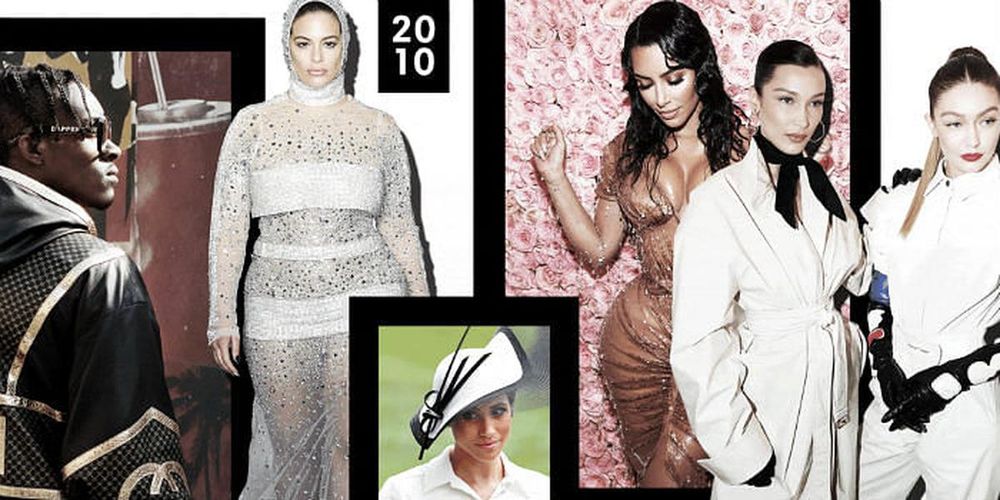
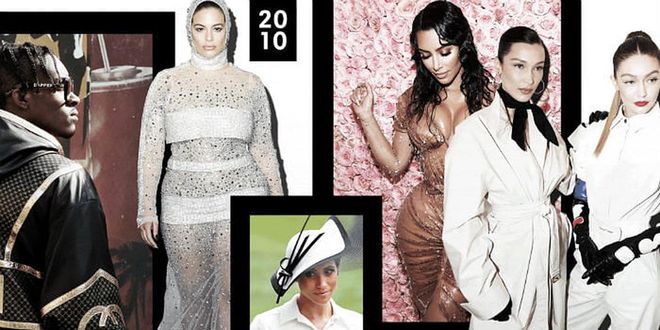
Photo: Courtesy
12 Ways Fashion Was Defined in the 2010s
Ten years ago, the word emoji looked like a typo, and the concept of canceled applied mostly to schools on snow days. A decade—this decade!—later, the world has reprogrammed its playbooks for power, desire, and beauty, creating new paradigms that spiral through cyberspace at the speed of light—or at least at the speed of Kylie Cosmetics sales. Where does the fashion world stand at the end of a tumultuous, transformative decade? These 12 moments give us some hints at where we’re going, thanks to a trail of Instagram crumbs that show us where we’ve been.
The Insta-fication of Fashion
Speaking of Instagram, it’s not hyperbolic to say the social network changed the world—or rather, #THEWORLD—and certainly fashion too. What began as a way to brag you were at a Jay-Z concert became a daily stream of brands, trends, and pixel-glossed bodies that turned us all into avatars playing a long, lucrative style game. Brands like Reformation and Alyx Studio became millennial staples through a trail of posts and likes; fashion shows transformed into multimillion-dollar spectacles designed solely to look cool on a handheld livestream; influencer became a career aspiration instead of a word that wasn’t actually in the dictionary.
Inevitably, the platform’s well-respected fashion empress, Eva Chen, went from being an industry phenom to a celeb in her own right, thanks to both her tastemaking power and her seriously adorable small children. As for fashion itself, it was urged to think inside Instagram’s box, which might explain why leopard-print skirts and coats—not little black dresses and handbags—are the key staples of stylish women’s closets. Hey, a dynamic print looks way better in those “candid” street style photos.
The Sleek Glow-Up of Kim Kardashian West
She’s beauty, and she’s grace; she’s Miss United States—symbolically, anyway. Such is the omnipotent reach of Kim Kardashian West, that saying she defined the decade is like saying champagne is wet. But her remarkable rise is fascinating not because it was a rags-to-riches situation, but because it was the privileged Hollywood equivalent: Kim Kardashian West turned reality TV into a bigger star-making vehicle, and a more efficient luxury fashion advertisement, than traditional movie star fame.
With input from husband Kanye West and CEO mom Kris Jenner, as well as an adolescence spent studying the rise of peers (as in, actual schoolmates) like Paris Hilton and Nicole Richie, she became the most famous person on earth and an evangelist for contour makeup, beige bodycon, Perspex heels, “glass skin,” alternative fertility knowledge, restorative justice, black lace leotards, and tiny Louis Vuitton purses.
It’s easy to talk shit about someone so rich and famous, but it’s hard to fault anyone—least of all an ambitious modern woman—for believing her own appeal mattered more than the Hollywood star system, and proving that her worth as an ever-present, Internet-powered icon of the people was the 2010s version of Cleopatra, Marilyn Monroe, or Aphrodite herself. After all, what is a goddess but someone who knows acolytes are the ultimate accolades?
Related article: The Kardashian-West Christmas Card Has Arrived

Photo: Getty
12 Ways Fashion Was Defined in the 2010s
Black Style Matters
Despite fashion’s eternal obsession with thin blonde women, the 2010s brought people of color to the industry forefront in ways that were long overdue. While Kerby Jean-Raymond made Pyer Moss a beacon of new American style, Dapper Dan claimed a multifaceted Gucci contract after being “referenced” (but basically copied) on the runway. Christopher John Rogers debuted his first New York Fashion Week collection in September (everyone totally freaked; standing ovation), while Aurora James and Victor Glemaud continued to win shoppers’ hearts (and their money) with elevated staples for all different style tribes.
Runways finally had an influx of many models of color, too, including the Valentino campaign stunner Adut Akech, Tennessee cool girl Binx Walton, and Sports Illustrated sweetheart Halima Aden, who made history as the magazine’s first-ever swimsuit model in a hijab. And let’s not forget Lupita Nyong’o, Gabrielle Union, and Yara Shahidi, who scored campaigns for Miu Miu, Rodarte, and Coach respectively.

Photo: Courtesy
12 Ways Fashion Was Defined in the 2010s
Every Body Is a Fashion Body
Speaking of Sports Illustrated, it reached another milestone in 2016, when it chose plus-size supermodel Ashley Graham as its Swimsuit Edition cover star. Graham went on to walk for the body-positive mogul Christian Siriano, plus Michael Kors, Prabal Gurung, and more designers, and became a face of Revlon and David Yurman. Other brands like Marc Jacobs, Swarovski, and Levi’s cast plus-size faces for their own campaigns, while model Jillian Mercado starred in ads for Nordstrom, Diesel, and Calvin Klein by posing in her wheelchair. (Tony Award winner Ali Stroker opened Rachel Antonoff’s 2016 fashion show in her wheelchair too.)
Millennial fashion writer Sinéad Burke became the first little person to attend the famous Met Gala; it was this season, as a guest of Gucci. She also appears on covers for The Business of Fashion and British Vogue, and hosts a podcast with fashion icons like Victoria Beckham and Adwoa Aboah.
Labels have taken notice, with Tommy Hilfiger creating an adaptive collection for differently abled bodies and Rodarte pairing with Universal Standard to create its first-ever expanded size range. When role models become actual models, systemic change starts to become a thing of beauty. Let’s keep it up.
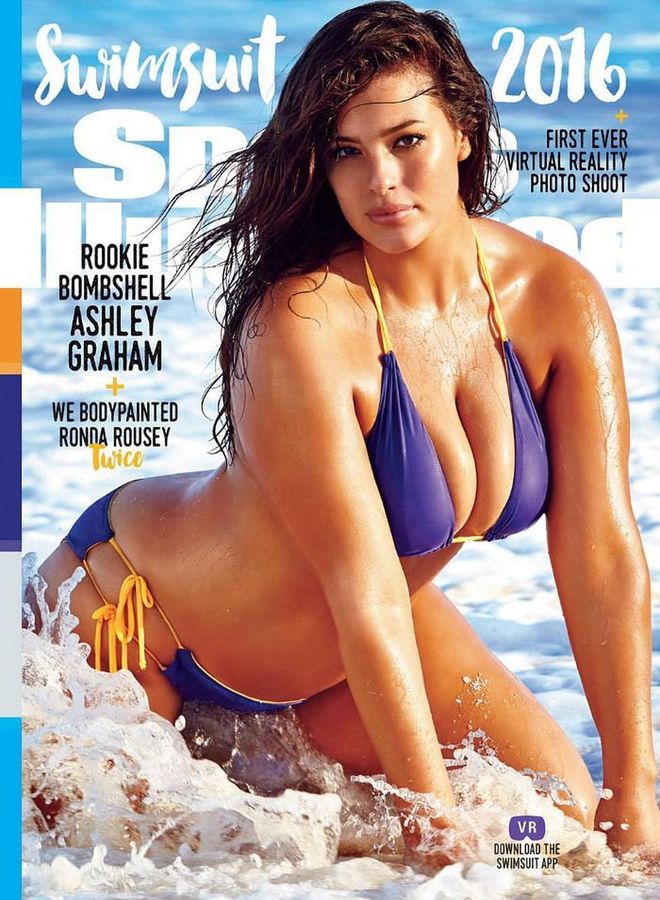
Photo: Sports Illustrated
12 Ways Fashion Was Defined in the 2010s
See Now, Buy Now … or Later, or Whenever
Ten years ago, see now, buy now was the phrase that would “save” retail from the increasing gap between Internet interest and boutique availability. Instead of waiting six months for a runway collection to hit shelves—or worse, getting impatient and buying the fast fashion equivalent a month later—consumers would ostensibly be thrilled to pay full price for instant gratification.
The thing is, they weren’t, because runway shows aren’t about selling looks; they’re about creating an iconic cultural moment. Now, designer clothes get delivered to stores in small micro-shipments so luxury boutiques can refresh the sales floor every few weeks, just like H&M and Zara. As for runway-to-real-life FOMO, it’s still a thing, but now that YouTube hauls show people’s constant closet refreshes, having an under-the-radar outfit you didn’t see on the runway is often more of a flex.
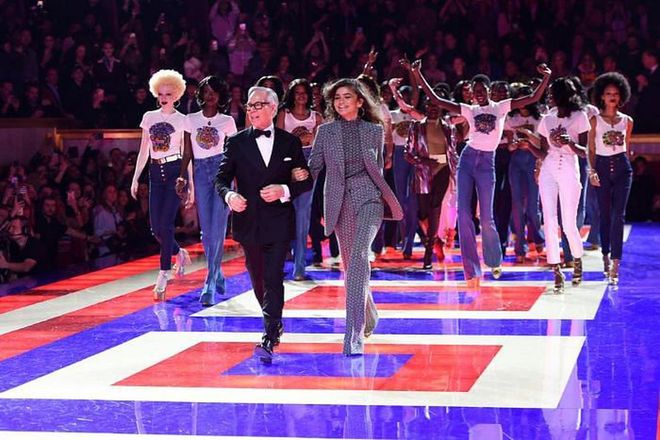
Photo: Getty
12 Ways Fashion Was Defined in the 2010s
The Gigi and Bella Connection
A decade ago, Mary-Kate and Ashley Olsen were the most famous sisters in fashion. Paparazzi followed their every Starbucks sip, thwarted by their massive handbags and cardigans that doubled as shelter tents. They were notoriously private and priestess-like in the furtive devotion they inspired. The Sisters Olsen are still a fashion force, and still so ethereally spacey, you’d swear they use The Force. But their fame has been eclipsed by a very different pair of siblings.
What’s weird is, Gigi and Bella Hadid are in some ways the exact inverse of MK + A. Instead of hiding from the cameras, they broadcast their photos themselves. Instead of shielding their bodies from view, they reveal a repertoire of toned skin, often lit by the California sunshine that nourished their teenage ascent. Athletic, joyful, and unafraid to clap back, Gigi and Bella represent a new kind of female duality, one in which blonde or brunette doesn't mean Ashley (refined, industrious, popular) or Mary-Kate (wild, instinctive, artistic), but instead two variations on a theme: sweet, sporty bombshell or sweet, sexy rock star.
The sisters are beloved because they're so relatable: They lose shoes! They wrestle with their friends! They hang out with their mom! You almost forget they're untouchable. But just like the Olsens, the Hadids are so famous, so beautiful, and so totally in demand by forces beyond measure that all one can do is watch them. And you know, they seem really nice.
Related article: Bella Hadid Rocked A Waist-High Leg Slit In Miami
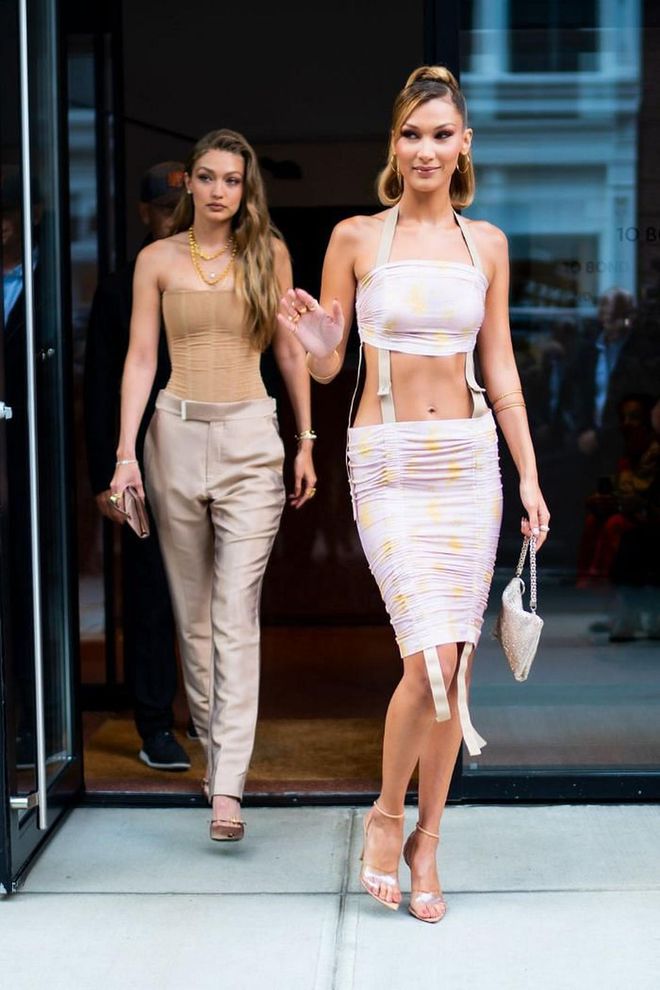
Photo: Getty
12 Ways Fashion Was Defined in the 2010s
What Is Gender?
We hold these truths to be self-evident: Trans women are women, trans people are people, and you have the ultimate power over your pronouns and gender identity. Now that we’ve stated the painfully obvious, let’s explore the style side of things, where designer menswear becomes a closet staple for fashion-obsessed women, Billy Porter wears a ball gown to the Oscars, and the gender spectrum itself provides inspiration for forward-thinking labels like Thom Browne, Margiela, Chromat, and Comme des Garçons.
Meanwhile, openly trans runway stars like Nate Westling, Hari Nef, Dara Allen, Finn Buchanan, and Teddy Quinlivan are booking huge jobs with brands like Prada, Louis Vuitton, and Moschino. As gender constructs dissolved in this decade, fashion was one of the first industries to adapt, react, and embrace the possibilities. And as long as we’re talking possibilities, have you noticed Uniqlo’s JW Anderson coat—which is technically for men, but whatever—is finally on sale?!
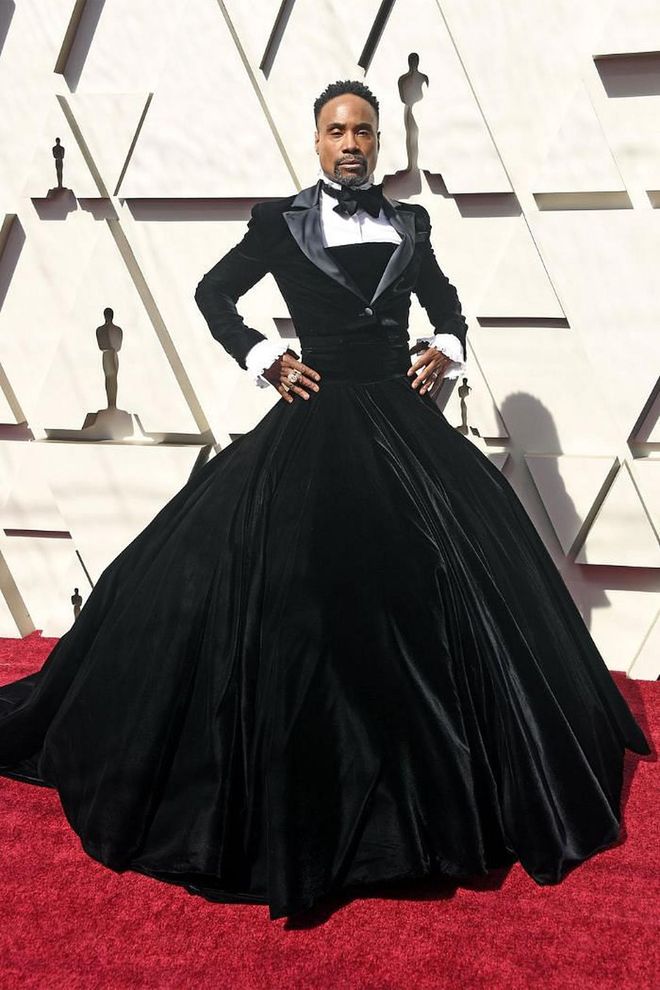
Photo: Getty
12 Ways Fashion Was Defined in the 2010s
Normcore but More
It’s not often you drop everything and demand to become another person, but Phoebe Philo made me do it. As creative director of Céline, she strode onto her spring 2015 runway in a messy bun, a sweater, a pair of wide-leg black pants, and Adidas Stan Smiths. She had a hair elastic on her wrist. She had silver double hoops in her ears. I can’t tell you anything about Céline’s actual collection that season (sorry!), but I can recount, in precise detail, how I felt seeing a grown woman at work, looking like a grown woman at work. To put it simply, it felt like I finally had a chance in this crazy gluten-free-stiletto-sharp style world. It felt like winning what I knew I deserved.
Critics and BuzzFeed called it normcore, the practice of making really regular clothes but making them in gorgeous fabrics with subtle, elevated tricks that only true fashion snobs would see. There were Balenciaga’s Bernie Sanders beanies, Isabel Marant’s coveted yet anonymous gray sweatshirts, Birkenstock’s Rick Owens rollout, Vetements’ absurdly pricey hoodies, and so many Crocs. The result was a little ridiculous when done for a hypebeast effect—the Emperor’s Used Clothes, so to speak—but when Philo and her female contemporaries like Stella McCartney and Margaret Howell made posh plainclothes collections that made it easier to move through the world as a woman of alluring influence? It wasn’t artifice; it was just a boss move.
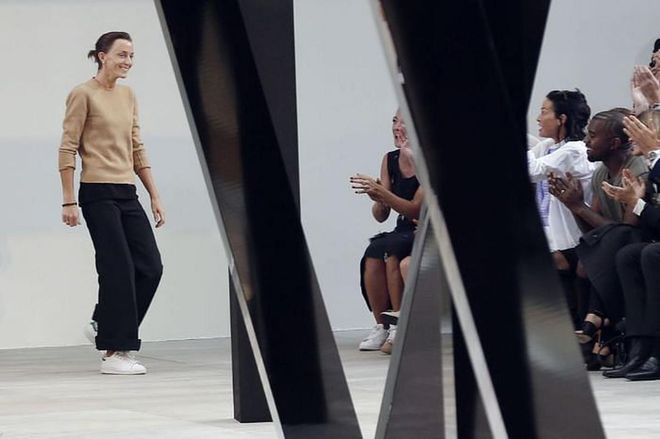
Photo: Getty
12 Ways Fashion Was Defined in the 2010s
The Rise of the Celeb Creative Director
In the 2010s, there were two types of fashion people: those who could name the creative directors at every major house and those who weren’t actually fashion people. That’s because love in the time of Instagram felt a lot like name recognition, and designers became increasingly fueled by their own signature genius instead of the “house codes” (read: repeating aesthetic patterns) that traditionally stoked a brand’s fashion fire. During Alexander Wang’s short but sweet Balenciaga tenure, the party-loving designer was name-checked in lyrics by Nicki Minaj and Jay-Z (who also drops Tom Ford—not Molly).
Speaking of Mr. Ford, he nabbed Golden Globe nominations for his film Nocturnal Animals—not for the costumes, but for Best Director and Best Screenplay. Also in the film world, Jeremy Scott was the subject of a critically acclaimed documentary after becoming creative director at Moschino. And Hedi Slimane’s unparalleled appeal with surf-goth aristocracy proved he could sell the same knife-thin jeans and die-for-it blazers at Dior Homme, Saint Laurent, and Celine-not-Céline just by being himself. (Riccardo Tisci’s revamp of Burberry and Nicolas Ghesquière’s takeover at Louis Vuitton are similarly beloved for adhering to their own aesthetics instead of a rigid brand heritage.)
Sure, celebrity creative directors can sometimes backfire—witness Raf Simons’s achingly beautiful revamp of Calvin Klein that scored big with critics but rung up a rumored $60 million in lost profits. But in the case of Virgil Abloh, being incredibly famous is going incredibly well. Besides defining the future of Louis Vuitton menswear, he’s turned Off-White from a cult hoodie collection into a full ready-to-wear line, and become a powerful arbiter of fashion, art, and music in the process. He even made quotation marks a fashion thing, marking the first time ever that stylists and models have cared about grammar. It’s a big deal.
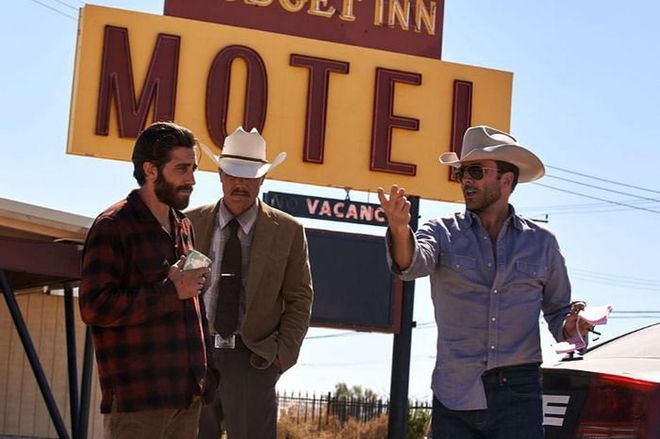
Photo: Courtesy
12 Ways Fashion Was Defined in the 2010s
Fashion Flameout
The underbelly of fame is often anxiety, isolation, and addiction. Fashion stars aren’t immune to these plagues, as we saw in 2010, when legendary designer Alexander McQueen tragically killed himself at age 40. In 2011, another catastrophe: John Galliano’s drunken rant on a fellow bar-goer was so viciously bigoted, it got him fired from Dior, plastered on the front page of every newspaper, and even parodied on Saturday Night Live. He blamed drugs and exhaustion, citing fashion’s ever-shrinking schedule to create clothes and content at a harmfully fast pace.
Lauding Hitler is never okay, and frankly, nobody should ever have to type that sentence. But Galliano and others did articulate the very real perils of being overworked while one’s mental health is overlooked, slowly sparking movements like The Model Alliance, dedicated to their fair treatment and well-being, and The Chain, a support group for fashion and media workers with eating disorders.
Meanwhile, as phrases like toxic work environment trickled into pop culture, magazines and ateliers once rife with bad behavior began to reckon with—and in many cases, rectify—their troubled environments.
Cancel Culture: Couture Edition
But what happens when fashion brands don’t take the hint (or the Glassdoor review) and start treating their employees and customers like valuable human beings? Then it’s time for cancel culture, the online phenomenon that names and shames bad behavior and sometimes ruins careers in the process.
The 2010s saw the rise of Twitter rants, boycott hashtags, the #MeToo movement, of course, and Diet Prada, the Instagram juggernaut that tirelessly crusades for independent designers and original ideas. When it got proof of Dolce & Gabbana’s racist DMs before the brand’s first-ever Chinese couture show, the indie site put the couture label on blast, causing an online uproar so loud, it forced the brand to call off its imminent runway show and lose millions of dollars in the process.
Most recently, luggage start-up Away replaced its founding CEO after an article went viral detailing her many missteps, including alleged abusive behavior aimed at junior employees. She was replaced by the CEO of Lululemon, a brand that also got cancelled (in 2013) for selling yoga pants that turned out to be sheer. (It has since atoned with some pretty great leggings for cold-weather running.)
The Crown(s)
With an infusion of new blood into the storied British monarchy, royal style became a real thing thanks to Duchesses Kate and Megan, the regally pretty wives of Princes Will and Harry—and largely influential style influencers.
Kate sticks to tailored suiting, jewel-tone dresses, and preppy staples like her late mother-in-law, Princess Diana, while Megan favors classic Hollywood glamour à la Princess Grace Kelly in her Monaco heyday. Both have the power to sell anything, pretty much instantly: Everything from Kate’s Reiss wrap dress to Megan’s Strathberry handbag has caused retail frenzies, and even Princess Charlotte’s tiny floral dresses are chronicled by style blogs.
Meanwhile, Lady Amelia Windsor (39th in line for the throne) just launched her own jewelry collection, and Lady Kitty Spencer (niece of Princess Diana) is a model for Bvlgari. Other fashion folk with royal bloodlines: Chanel stylist Lady Amanda Harlech and major models Cara Delevingne, Stella Tennant, and Lady Jean Campbell (the naked girl in Bottega Veneta’s current ads).
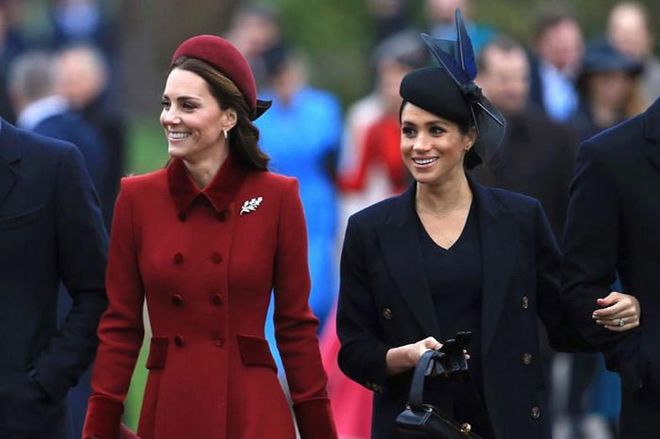
Photo: Getty
This article originally appeared on Harper's BAZAAR US.
Related article: A First Look At The Cambridges' Christmas Card